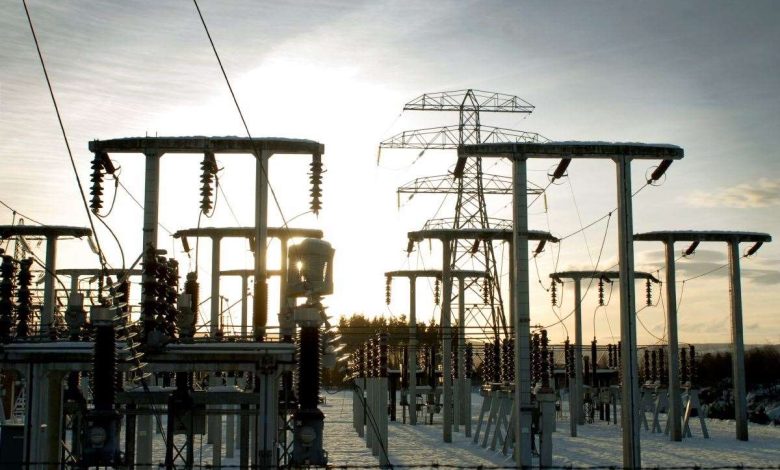Norwich to Tilbury pylon plan could spawn ‘legacy of degradation’, say MPs

The proposed pylon line in East Anglia has been a topic of controversy, with many residents and local leaders expressing their concerns about the potential impact on the environment and the visual landscape. Eight Members of Parliament from the region have written to the Energy Secretary, Ed Miliband, to plead their case for exploring alternative solutions. The MPs argue that the current plan, which would see a 115-mile line of pylons stretching from Norwich to Tilbury, would leave a legacy of visual and environmental degradation. They claim that the National Grid’s approach has been too rigid and has not given sufficient consideration to other options. The proposed pylon line would not only be an eyesore, but it would also have significant implications for the local ecosystem and the economy. The construction of the pylons would require the creation of various sub-stations along the route, which would further disrupt the natural beauty of the countryside.
The National Grid has maintained that it considered offshore and underground alternatives, but concluded that these options would be more expensive. However, the group of Conservative MPs disagrees, citing the East Anglia Network Study published by the National Energy System Operator (Neso) in March 2024. According to the study, an underground HVDC system, which uses high-voltage cables to carry power over long distances, would be a more cost-effective option. The MPs argue that this alternative solution would not only be better for the environment, but it would also be more cost-comparable to the current pylon plan. They believe that the National Grid has not given sufficient consideration to this option and that the Government’s recent offer of £250 off annual energy bills for homeowners living near the pylon line is a “blatant bribe” intended to silence opposition to the plan. The MPs are not alone in their concerns, with many local residents and business owners expressing their opposition to the pylon plan.
The proposed pylon line would have significant implications for the local community, with many residents concerned about the impact on house prices, farms, and community spaces. The construction of the pylons would not only be an eyesore, but it would also disrupt the natural beauty of the countryside, which is a major draw for tourists and locals alike. The MPs are calling on the National Grid to reconsider its approach and to explore alternative solutions that would have less of an impact on the environment and the local community. They believe that the current plan is flawed and that it would be a mistake to proceed with it without giving proper consideration to other options. The National Grid has insisted that it held a consultation in January after reviewing feedback from previous engagement exercises, but the MPs argue that this consultation was insufficient and that more needs to be done to address the concerns of local residents.
The East Anglia Network Study published by the National Energy System Operator (Neso) in March 2024 provides a compelling case for an underground HVDC system. The study shows that this option would be more cost-effective and would have less of an impact on the environment. The MPs are calling on the National Grid to take this study into consideration and to explore the possibility of using an underground HVDC system instead of the proposed pylon line. They believe that this option would be better for the environment, the local community, and the economy. The National Grid has a responsibility to consider all options and to choose the one that is best for the environment and the local community. The MPs are urging the National Grid to take a more nuanced approach and to consider the long-term implications of the proposed pylon line.
The Government’s recent offer of £250 off annual energy bills for homeowners living near the pylon line has been criticized by the MPs as a “blatant bribe” intended to silence opposition to the plan. The MPs believe that this offer is insufficient and that it does not address the underlying concerns about the impact of the pylon line on the environment and the local community. They argue that the Government should be taking a more proactive approach to addressing the concerns of local residents and that it should be working to find alternative solutions that would have less of an impact on the environment. The National Grid has insisted that it has considered offshore and underground alternatives, but the MPs believe that more needs to be done to explore these options and to find a solution that works for everyone.
In conclusion, the proposed pylon line in East Anglia is a contentious issue that has sparked significant debate and concern among local residents and leaders. The National Grid’s approach has been criticized as too rigid and insufficiently considerate of alternative options. The MPs are calling on the National Grid to reconsider its approach and to explore alternative solutions that would have less of an impact on the environment and the local community. The East Anglia Network Study provides a compelling case for an underground HVDC system, and the MPs believe that this option should be given proper consideration. The Government and the National Grid have a responsibility to consider all options and to choose the one that is best for the environment and the local community. By working together and exploring alternative solutions, it is possible to find a solution that works for everyone and that protects the natural beauty of the East Anglia countryside. The MPs are urging the National Grid to take a more nuanced approach and to consider the long-term implications of the proposed pylon line. Only by doing so can we ensure that the environment and the local community are protected for generations to come.









Super-Duper blog! I am loving it!! Will come back again. I am bookmarking your feeds also
I must express my respect for your generosity for persons who really want assistance with this one concept. Your very own commitment to passing the solution along turned out to be rather valuable and have continually made ladies much like me to reach their endeavors. Your amazing informative key points can mean so much a person like me and substantially more to my colleagues. With thanks; from everyone of us.
I conceive this site has got some rattling fantastic info for everyone. “Loving someone is easy but losing someone is hard.” by Shelby Harthcock.
Thanks for the sensible critique. Me & my neighbor were just preparing to do some research about this. We got a grab a book from our local library but I think I learned more from this post. I’m very glad to see such wonderful information being shared freely out there.
Hey there just wanted to give you a quick heads up and let you know a few of the images aren’t loading properly. I’m not sure why but I think its a linking issue. I’ve tried it in two different browsers and both show the same results.